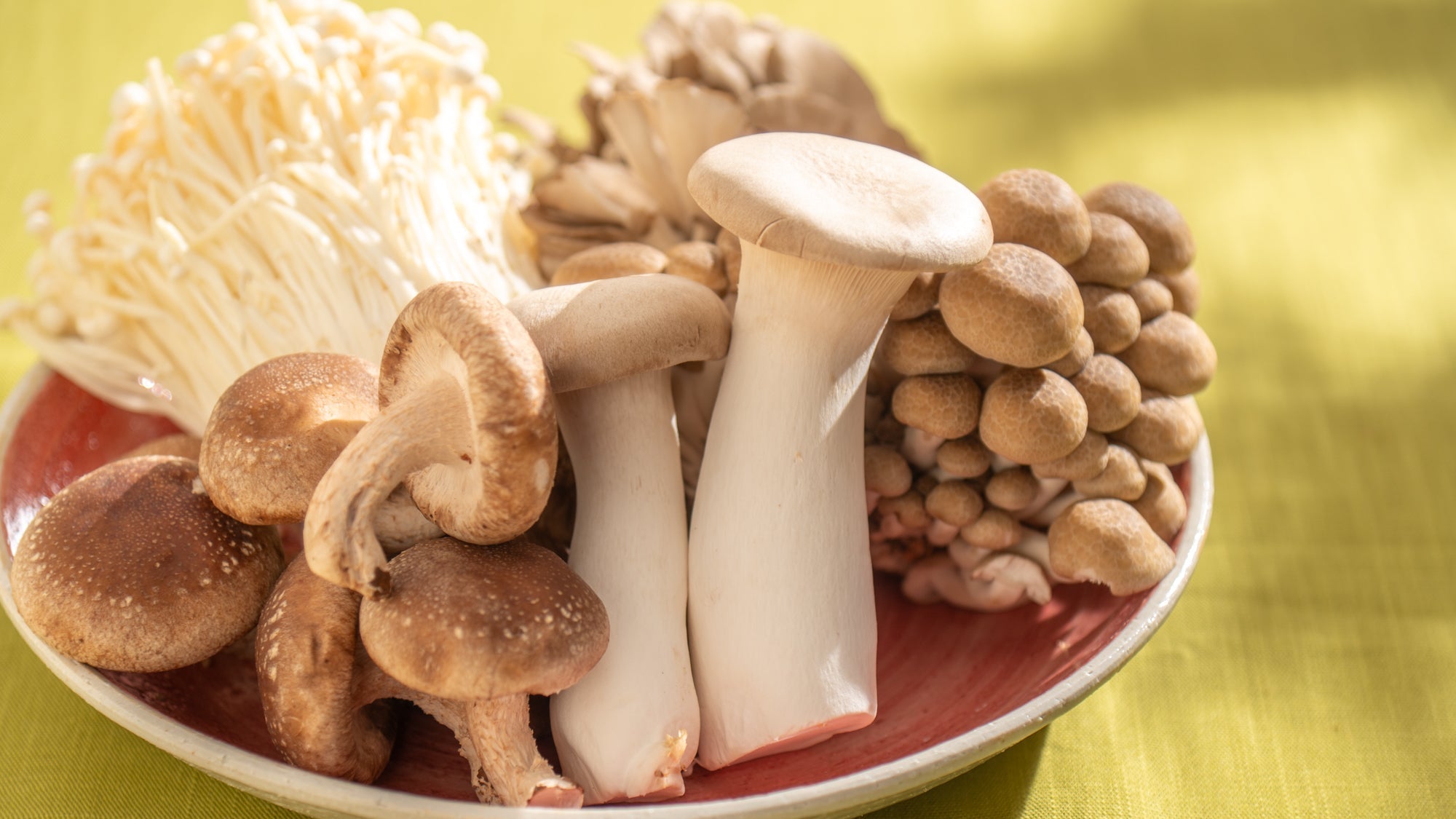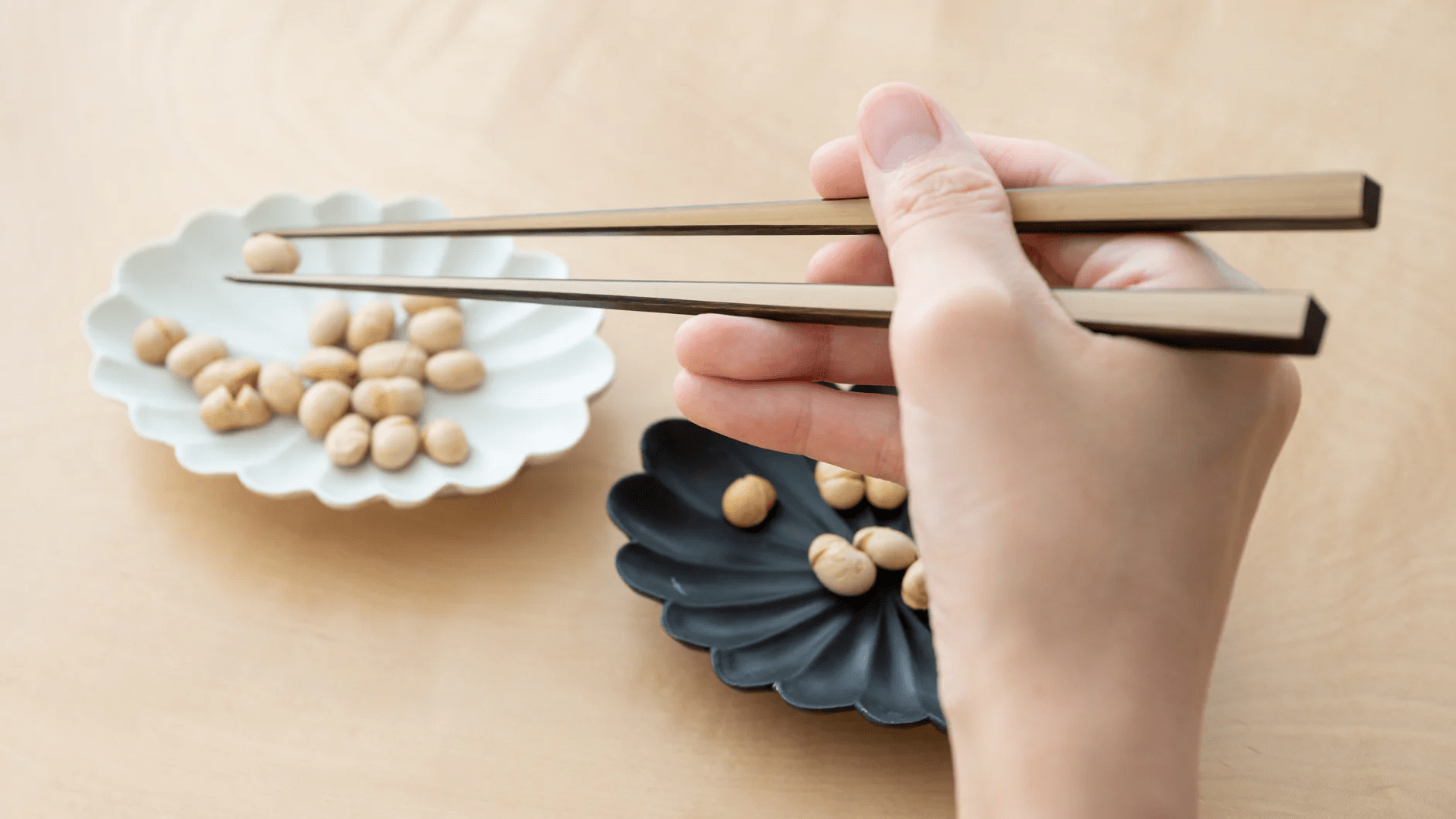
The Nutritious Magic of Japanese Mushrooms
Written by Team MUSUBI
Autumn’s drop in temperatures brings with it a longing for hearty meals, like donabe pots filled to the brim with nourishing goodness or the welcoming warmth of a simple miso soup. It is at this time of the year that we make room for more mushrooms on the menu, due to their seasonal abundance and nutritional benefits. Read on and reap the rewards of knowing more about the rich variety of Japanese mushrooms, or kinoko, that you can incorporate into your home-cooked dishes this fall.
Shiitake

Shiitake can be purchased fresh or dried. What is especially intriguing is that their flavor, aroma and nutritional value increases when dried. Dried shiitake also have a long shelf life, making them a great item to keep handy in your pantry. Placing dried shiitake with their stems facing direct sunlight prior to rehydrating them with water, can increase their Vitamin D content. Admittedly, soaking dried shiitake takes five to ten hours, but once rehydrated, they can be kept refrigerated in a sealed bag for up to a week, giving you plenty of time to enjoy them in various homemade dishes.

And proving just how serious Japan is about shiitake, the annual National Dried Shiitake Mushroom Appraisal Competition, which diligently assesses the taste, size, aroma, meatiness and other qualities of dried shiitake from producers all over the country, has been held for the past 70 years. When we consider the long history of shiitake consumption and cultivation, as well as the painstaking farming process, which can take as long as three to four years, getting an award for producing them seems very appropriate.
Matsutake

The above image is for illustrative purposes only.
It is not farfetched to say that matsutake occupy a place among mushrooms akin to that of truffles. Rightfully deemed a delicacy, matsutake are highly-prized in the gourmet world, commanding prices as high as 15,000 yen for a mere 100 g (3.5 oz). This may seem exorbitant, but the taste and rarity of matsutake prove the price is, in fact, not so unreasonable.
Matsutake are famed for their unique flavor profile, and are often prepared with minimal seasoning to fully appreciate their earthy, pine-like taste and distinct aroma, that make them a truly gourmet mushroom. They can be grilled, sauteed, or used in broths and rice dishes. One such popular dish is matsutake gohan, rice with matsutake, and if you are in Japan for the autumn season you can even grab it in the form of an ekiben “railway bento” when traveling by train. You will also find them in fine dining establishments served in dishes such as chawanmushi “Japanese steamed egg custard.”

Historical sources show that the Japanese people were familiar with matsutake as early as the Jomon period (c. 14,000 BCE–1,000 BCE), as they are featured among the mushroom-shaped pottery pieces found at archeological sites from that time. Furthermore, the oldest extant Japanese poetry collection, the Manyoshu (Collection of Ten Thousand Leaves), includes a poem about their scent during peak season in the mountains of Nara. Hunting for matsutake is even said to have been a favorite pastime of Toyotomi Hideyoshi, one of Japan's three unifiers.
Maitake

They are not only beautiful to look at, but also a low-calorie nutritional powerhouse. Among many other vitamins and nutrients, they are rich in Vitamin B2, which regulates the conversion of fat and carbohydrates into energy. Maitake are also extremely beneficial for the skin, eyes and muscles because of high levels of potassium. They are even more bountiful in Vitamin D than other mushrooms and letting them sit in the sun for a while can increase their beneficial nutrients even further. Maitake’s disease prevention potential, including anti-carcinogenic properties, has been the subject of research since the end of the 1940s.

The above image is for illustrative purposes only.
Step into any Japanese supermarket and you are likely to take the ever-present maitake for granted, as it is sold not only in the fall, but year-round. This mushroom, however, is a relatively new addition to the diet of the average Japanese person. Previously, colonies of these mushrooms grew naturally in dense, humid laurel forests and could only be foraged by professionals. However, cultivation began in the 1970s, leading to maitake’s gradual rise in popularity.
With a delicate, nutty taste, the maitake is rich in umami flavors and has a texture with a good bite to it. Appealing to the palate and now widely available, it is utilized in a myriad of Japanese, Western and Chinese dishes. They are popular deep-fried as tempura, and a perennial favorite to add to donabe hot pots, soups as well as in sukiyaki and teppanyaki dishes. Maitake are also famously an essential ingredient in kiritanpo nabe, a regional hot pot cuisine of Akita Prefecture.
Shimeji

With their short and stout caps huddled close together, bunashimeji are adorable. Rich in potassium, Vitamin D and dietary fiber, they stand out as one of the most low-calorie mushrooms. An commonly mentioned Japanese culinary rule-of-thumb is to choose “matsutake for their fragrance, and shimeji for their taste." Bunashimeji are very versatile, with a mild flavor and slight sweetness, while also being rich in umam. They do not lose their shape during the cooking process and are tender, so their chewy texture can be fully enjoyed. Often included in miso soup, they are also a delicious and thrifty choice to add to pasta and omelets, as well as sauteed dishes and stir-fries.

Eringi

Eringi are a great vegan or vegetarian option when you are craving a robust and meaty mushroom. With a subtle, nutty flavor, they are delicious when grilled or roasted, especially after being marinated in ginger and soy sauce. When cooked in butter and soy sauce, their distinctive abalone-like flavor can be fully enjoyed.

Enoki

After a brief pause in the mid-1940s, cultivation resumed during the post-war period when enoki was sold at high prices at Tsukiji Market to high-end restaurants that used it in donabe hot pot dishes. Although more famous for its ski resorts and onsen-bathing snow monkeys, Nagano Prefecture not only produces over 30% of Japan’s mushrooms, but also 60% of enoki mushrooms.

They are perfect for adding a subtle bite to your culinary endeavors, whether stirred into a curry or wrapped in bacon for a savory snack. Nutty and mild in flavor, they become soft and somewhat sticky when cooked. One of the most popular recipes that brings out their taste and texture, and works well as a salty, delicate topping for rice, is nametake, in which enoki are simmered in soy sauce.

Japan’s taste for the humble mushroom dates back to prehistoric times. Ancient foragers, who carefully distinguished between different types and passed this vital knowledge to future generations, would likely be astonished by the vast selection available at a 21st-century supermarket. The idea that a mushroom could become one of Japan’s most prized foods might leave them speechless, but what would surely make them smile is seeing people all over the world eager to cook and savor Japanese mushrooms.







Leave a comment
This site is protected by hCaptcha and the hCaptcha Privacy Policy and Terms of Service apply.